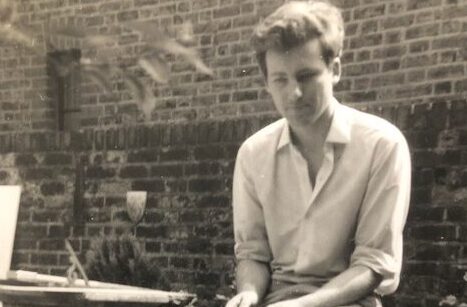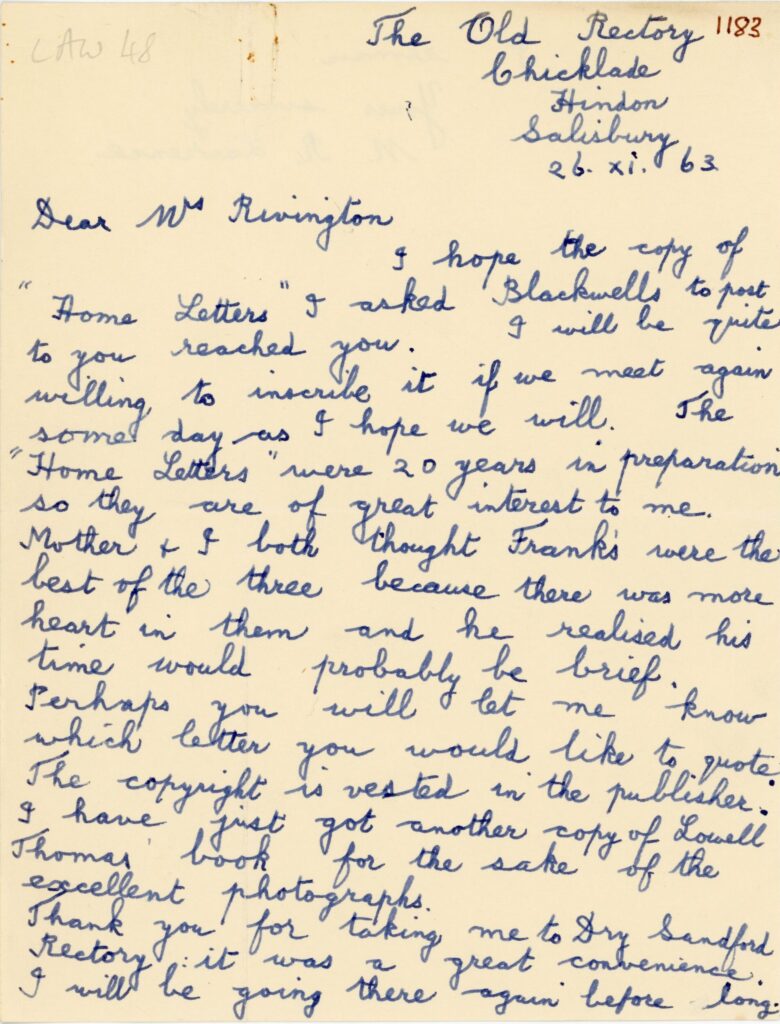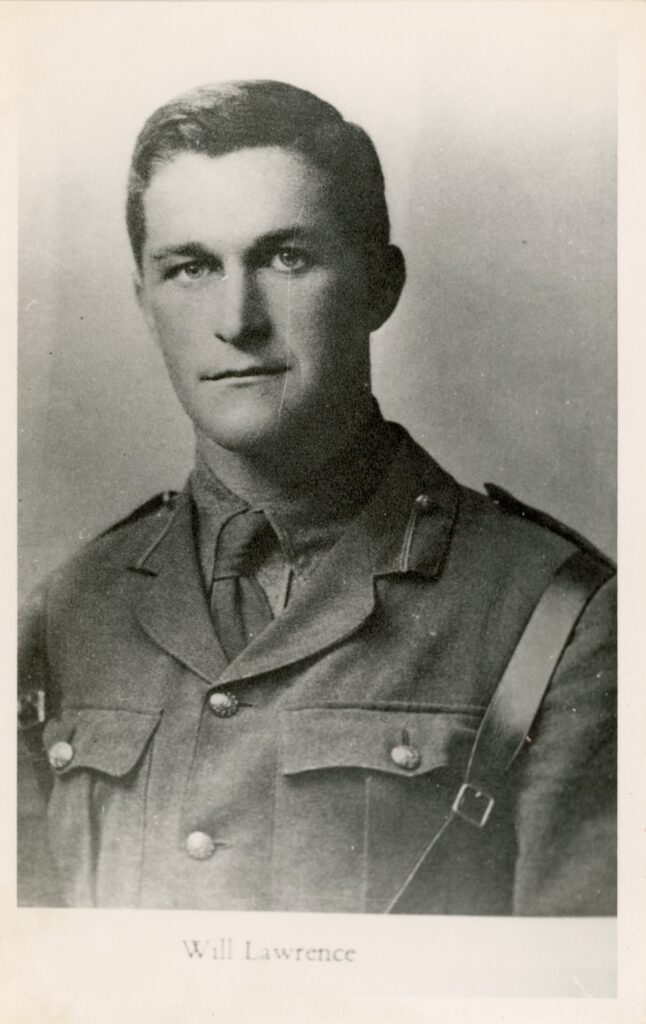


T.E. Lawrence was the second of five brothers, who all grew up in North Oxford in the early 1900s. Thanks to the acquisition of the Jeremy Wilson collection, Magdalen now holds original letters by four of the brothers – Bob, Ned (T.E.), Will and Arnold. In particular, authorised biographer Jeremy Wilson’s long-term collaboration with the youngest brother Arnold Walter Lawrence provides revealing new insights into the careful maintenance and control of T.E. Lawrence’s legacy during the twentieth century.
A.W. Lawrence and Jeremy Wilson
Arnold Walter Lawrence (1900–1991), the youngest brother of T.E., was by profession an archaeologist. As he was the last surviving Lawrence sibling, A.W. Lawrence also became the guardian of his brother’s legacy, which he fiercely defended. Wilson’s relationship with A.W. Lawrence endured over two decades, although they often disagreed on their approach to preserving Lawrence’s reputation. Their correspondence demonstrates the complexity of the relationship between a biographer and the family of his subject.
Photograph of A.W. Lawrence and his wife Barbara in Athens, 1964
Wilson Papers, P450/R/IAV/1/2
Photograph of Jeremy Wilson, c. 1970s
Image courtesy of Nicole Wilson.
Letter from A.W. Lawrence to Jeremy Wilson opposing publication of the 1922 text of Seven Pillars. The Wilsons’ own Castle Hill Press published this early version of the text in 1997 to great acclaim.
Wilson Papers, P450/R/COR/4/15




Mounting the Lawrentian Soap-Box
Jeremy Wilson was initially reluctant to write a biography of Lawrence of Arabia. He agreed to edit Lawrence’s commonplace book, Minorities, in 1970.
In this 1970 letter to A.W. Lawrence, Wilson writes about his approach to writing an introduction to Minorities, which he had also edited. He writes “in anticipation of your [A.W.’s] horror” and explains how he has been persuaded to “mount the battered Lawrentian soap-box” for this project but afterwards to “retire to the cathartic bliss of the Bodleian to be heard of no more”. He also outlines the philosophy that would go on to mark his approach to biography: “My object has been to let the man speak for himself, and not to ‘interpret’ for him”. Wilson also believed in the potential of a purely factual approach to eliminate Lawrence’s persistent aura of unknowability: “there really are few ‘mysteries’ in T.E.’s life, if people would only do enough research”.
Wilson Papers, P450/R/COR/4/4



Minorities
T.E. Lawrence’s commonplace book Minorities was published in 1971 with an introduction by Jeremy Wilson and a preface by Poet Laureate Cecil Day-Lewis, whose signature appears on this copy.
Library, Magd.Lawrence-T. (MIN) 1971 copy 2




Bob Lawrence
T.E.’s older brother Bob Lawrence also took part in the cultivation of the family legacy. In this letter to Lawrence researcher Arabella Rivington in 1963, Bob discusses the Home Letters of T.E. Lawrence and his Brothers, the family correspondence that he edited in 1954. He says that his younger brother Frank’s letters were the best as they had “more heart”.
Letter: Wilson Papers, P450/R/COR/5.
Photograph of Bob with his mother Sarah Lawrence (1861-1959), in the year she died at the age of 98.
Wilson Papers, P450/R/IAV/1




Will Lawrence
Will was the third Lawrence brother and the one closest to T.E. (who was known in the family as “Ned”) in age and character. He took a close interest in Ned’s archaeological work at Carchemish and went to visit him there in 1913. In this letter to their mutual friend Leonard Green written on 16 Dec 1910, Will describes Ned’s travels in Beirut and Constantinople and his imminent arrival at Carchemish to begin work on the dig alongside David Hogarth. He also describes the terms of Ned’s Senior Demyship at Magdalen.
Will also travelled East, becoming a teacher in India, but returned to the UK to join the fledgling Royal Flying Corps as an observer. He was killed in 1915, after less than a week at the front.
Photograph: Wilson Papers, P450/R/FAC/1/1/18
Letter: Acc. 2017/102/1.



